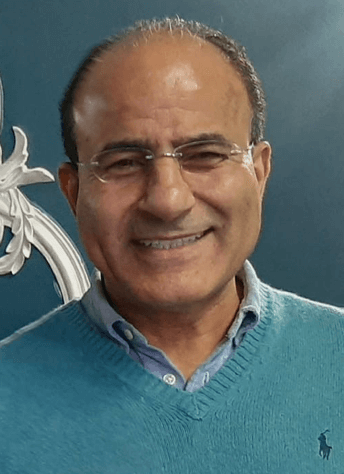Key Technical Challenges Facing Wide-Scale Deployment of Distributed Generation and Renewables: Is DERMS the Answer, or it is a Solution that Needs Another Solution
Written by Mohamed A Ali, Ahmed A Mohamed, and Tanvir Rahman
The widespread adoption of distributed, intermittent, and bi-directional DERs at the grid’s edge poses a myriad of technical, operational, and regulatory challenges to all stakeholders. The key challenge is how to cost-effectively and quickly interconnect DERs to the distribution grid without negatively impacting grid resilience and reliability. Currently, the traditional worst-case scenario approach to interconnection, which is typically used by utilities, is both too slow and expensive for DER developers. In this approach, if one or more solar farms want to connect to the same area of the distribution grid, utility performs a detailed analysis to determine the worst-case scenario impact of these interconnection(s) on the grid for a very small number of hours in a year (1-4% of the time during the year) [1]. Fearing instability, utilities have typically capped the portion of residential solar systems they’ll allow to be interconnected to a neighborhood feeder line at 30% or even lower.
Wide-scale deployment of DERs also presents significant new challenges at both the Transmission and Distribution levels [1]. This means that tight coordination between Transmission System Operators (TSOs) and Distribution System Operators (DSOs) is no longer an option. This also means that DERs need to be orchestrated throughout the entire grid. Thus, every single system in grid asset and operations management needs to be DER-aware and plays a role in their management. These include the Geospatial Information System (GIS), Advanced Distribution Management Solution (ADMS), Advanced Energy Management System (AEMS), Advanced Market Management System (AMMS), State Estimation and Contingency analysis, etc., all need to be DER-aware.
Can DERMS Deliver the Solution?
There is an emerging consensus that distributed energy resource management systems (DERMSs) are the key for solving most of the above-mentioned interconnection and operational challenges. A DERMS is a software-based solution to monitor, control, and dispatch, in real time, grid-connected and behind-the-meter DERs across customer, utility and market applications. Because utilities don’t have enough visibility of their distribution grids, they lack the means to manage their way out of new DER-related problems. That is where the salient feature of DERMS comes in, with “its ability to have full visibility and control over DERs.” Thus, DERMSs can provide the utilities with the tools required to manage and facilitate faster and cheaper integration of DERs into the grid.
For instance, rather than utilizing the typical slow and exhaustive performance analysis that determines the worst-case scenario impact of DER interconnections on the grid, DERMS introduces the new notion of flexible interconnection (FICS) [1]. FICS enables DER to efficiently and quickly connect to the grid by identifying these worst-case conditions (grid congestion, voltage fluctuations, thermal overloads, or poor power quality, which threaten grid reliability) and automatically curtail the DER to a safe level during the occurrence of these conditions. Furthermore, DERMS can take advantage of the advanced features and capabilities of smart inverters used in solar and battery systems. They can enable utilities and grid operators to dynamically change the operating modes and setpoints of an inverter in accordance with a problem that might arise in a given location or at particular times.
Challenges Affecting DERMS Proliferation
And yet, despite their promise, DERMS proliferation still faces several technical and regulatory hurdles. Typically, DERMSs will be owned, operated, and managed by utilities while DERs are owned and managed by the retailers/aggregators who packaged, marketed, and sold the DERs. IEEE Std 2030.5 and IEEE Std 2030.11 have been developed to standardize Integrating or interfacing DERMS with DER owner and aggregator. However, integrating/interfacing DERMSs with such numerous DER owners/aggregators (cloud-based servers), each with its own proprietary software, data communication network and protocol standards, presents a challenge on multiple levels for utilities and grid operators.
The problem is further exacerbated because DERMSs must interface and communicate not only with numerous third-party DER aggregators but also with an existing grid’s operating technologies,such as, SCADA, ADMS, AEMS, AMMS, and weather forecasting services, and so on. Numerous multiple vendors’ DER devices and systems of different kinds and generations will be integrated into the distribution grid. As a result, achieving end-to-end interoperability among these different devices and systems as well as all external and internal actors will not be practical.
What is needed is a higher level of standardization to build on IEEE Std 2030.11-2021, e.g., a scalable and interoperable standardized data communication network connectivity and protocol(s) that enable real-time, two-way secure communication between utility DERMS and DER devices/DER aggregators as well as existing grid’s operating technologies. Two standard communications protocols are needed. The first is a higher-level application protocol that allows all external and internal actors to securely exchange information and communicate with each other while the second is a lower-level data communication network protocol to provide the connectivity and communications pathways among all actors.
1. Lower-Level Standard Communication Network Protocol
Typically, DER’s registration process along with their initial and evolving technical and contractual parameters are kept and managed by the third-party aggregators. Though this is done outside the boundaries of the utility, all of these parameters still need to be reflected in the utility GIS to ultimately reach most or all of the existing grid’s operating technologies. Supporting such enormous amount of diverse data flow between all actors across millions of sensor points requires data communications network with unprecedent connectivity, ultra-high capacity, reduced latency, and orders of magnitude higher reliability than is required today. This can only be achieved with fiber connectivity or by using Fifth Generation (5G) cellular networks. Because at the lower distribution levels many secondary substations are located in remote locations, deploying point-to-point fibers is seen by DSOs as cost prohibitive and less flexible than cellular. With its ability to securely transmit large volumes of data at a low-cost, support massive connectivity, ultra-high reliability, and low latency, 5G is emerging as the most compelling cellular technology standard for supporting future high-DER-penetration power grid.
5G New Radio (NR) will support two new services suitable for the demanding use cases of future high-DER-penetration grid:
- Massive Machine-Type Communications (mMTC) to support massive connectivity targeting connection density of 106 devices/km2;
- Ultra-Reliable Low-Latency Communications (URLLC) targeting end-to-end latency of 1 ms.
Specifically, the anticipated mass integration of DER devices, microgrids, and fleets of storage and renewable assets into the grid requires millisecond-level precise load control—a clear use case for 5G connectivity. Use cases that don’t require such precise control and management (e.g., smart meters) can be supported using existing 4G network infrastructure.
Future high-DER-penetration grid will include a wide range of diverse use cases ranging from mission-critical applications with stringent end-to-end (E2E) latency and reliability requirements (e.g., system protection) to those that require support of massive number of connected devices with relaxed latency and reliability requirements (e.g., smart meters). 5G is the only single network standard that can support such a huge set of diverse performance and service requirements through its unique ability to perform network “slicing.” 5G network slicing is the process of creating multiple E2E independently calibrated and customizable virtual networks, each tailored for one or more use cases with similar service requirements, on top of the physical 5G infrastructure. Each of these virtual networks is referred to as a 5G-network slice.
Slicing allows utilities and grid operators to operate their networks at different scales and address unique and diverse customer needs. Each 5G-grid network slice can be managed and controlled by the utility or a third-party provider independent of all other network slices. The entire grid communication network can be divided into multiple virtual communications domains (slices), each serving one or more areas with similar service requirements. The number of slices that are needed to support the power grid network is a function of consumer demand as well as the number of diverse use cases that future power grid and energy market will support. 5G network slicing feature is one of the key drivers for utilities to adopt 5G as their communications network standard.
2. Higher Level Standard Application Communications Protocol
Utilities have typically used legacy SCADA communications protocol to interface or communicate with distribution substation devices (e.g., breaker, transformer, etc.,). However, it isn’t scalable, economical, or feasible to connect each and every small residential DER with a SCADA protocol. This is because of several things. First, SCADA communications and dedicated Remote Terminal Unit (RTU) hardware are prohibitively expensive to support such a huge number of small DERs. Secondly, a residential DER owner is not and will never be equipped with the same type of communications as an electrical substation. Since a residential DER owner is typically equipped with just Internet connection, this means that the higher-level standard protocol that will allow DERMSs to interface and communicate with tremendous number of DER aggregators/owners/devices must be a scalable and interoperable communication protocol that also runs on the Internet.
Please note that SCADA can still be used to interconnect/monitor and control the fewer front of the meter large DERs, if it is affordable. Thus, the chosen standard protocol must drastically expand the range of devices that can be monitored and controlled. The IEEE 2030.5 standard (formerly known as Smart Energy Profile 2 or SEP 2) is emerging as the envisioned standard protocol mainly due to its adoption in California (the State of Ca regulates the interconnection of DER through Rule 21) as the default communications protocol for DER integration applications. The IEEE 2030.5 standard is an IP-based protocol that is independent of the underlying physical transport layer. It is based on the most advanced DER model, “Common Information Model (CIM),” that was developed by the IEC standards organization and borrows from IEC61850, and goes way beyond, to represent all the technical and contractual parameters of DERs. It is capable of managing DERs across the utility and non-utility ecosystem. IEEE Std 2030.11-2021 was then introduced to standardize DERMS requirements and operations.
Though it is likely that IEEE 2030.5 and IEEE 2030.11 will continue to be adopted, yet there are many challenges to overcome in order to reach a single national or global standardization, specifically, as the standard continuing to vary by state and country. Furthermore, the standard is not yet flexible or stable enough to enable consistent interpretation by aggregators for all desired functions [2]. While IEEE 2030.5 is the “default protocol” for California Rule 21, other application-level protocols may be used under mutual agreement between utility and DER aggregators/owners.
In conclusion, it is the authors conviction that a viable widespread deployment of DERs and renewables is feasible provided that two condotions are filled: First, DERMSs must be deployed and efficiently utilized. Efficient utilization of DERMS requires the following two building blocks: i) a scalable and interoperable higher-level standard application protocol that allows all external and internal actors to securely exchange information and communicate with each. IEEE 2030.5 and IEEE 2030.11 standards have the potential to be the protocol of choice after some needed revisions and additions. ii) 5G cellular network must be used as the standard data communication network protocol to provide the required connectivity and communications pathways among all actors. Lastly, strategic partnerships between utilities, technology vendors, and aggregators must be formed [2].
References
- “Rising to the challenge of Renewables & DERs: Orchestrating Across the Electric Grid & its Prosumers,” GE, White paper, GE.com/digital/DEROrchestration
- “Coordinating Distributed Energy Resources for Grid Services: A Case Study of Pacific Gas and Electric,” National Renewable Energy Laboratory, Technical Report NREL/TP-7A40-72108. www.nrel.gov/publications.
This article was edited by Geev Mokryani
To view all articles in this issue, please go to October 2022 eBulletin. For a downloadable copy, please visit the IEEE Smart Grid Resource Center.

Mohamed A. Ali has more than 35 years experience in IT and telecommunications research. He is the author and co-author of more than 200 refereed journal papers, invited talks, book chapters, and conference presentations. His research synthesizes and extends results over the full discipline of mobile/fixed networking technology and architecture, from the physical layer of devices and components to the architecture layer of local access, Metro, and global carriers. His most recent work focuses on smart grid technologies and applications including Microgrids, plug-in electric vehicle (PEV)-to-grid (V2G) systems, and distributed energy resources as well as the interdependencies between the national civil critical infrastructures. Much of his work has centered on interworking between network elements and interaction among different protocols; his expertise in NC&M includes the entire stack, from Layer 1 to the highest layers including the newest generation of Software Defined Networking (SDN), Network Function Virtualization (NFV) and Cloud/Edge-based computing technologies. Dr. Ali has consulted and conducted joint research and development effort for/with several major carriers in the US including Verizon, Bellcore and AT&T. Dr. Ali received his MS and Ph. D., all in Electrical engineering from the City University of New York in 1985 and 1988, respectively.

Ahmed Ali A. Mohamed (El-Tallawy) is an Associate Professor of Electrical Engineering (EE) at the City College of the City University of New York (CUNY). He is the EE PhD Program Advisor, and the director of the CUNY Smart Grid Interdependencies Laboratory (http://smartgrid.ccny.cuny.edu). Prof. Mohamed serves on the editorial board of journals, including the IEEE Transactions on Transportation Electrification, IEEE Access, Springer Urban Rail Transit, Frontiers in Big Data, and IEEE TechRxiv. His research interests include critical infrastructure interdependencies, smart grid resilience, microgrids, and transportation electrification. He has numerous publications in these fields as book chapters, and articles in premier journals and conference proceedings. Prof. Mohamed is the recipient of the 2019 NSF CAREER Award, among several other honors and awards. Several of Prof. Mohamed’s publications received best paper awards.

Tanvir Rahman received his B. E. (2000) in electrical engineering from The City College of the City University of New York (CUNY) and Ph. D. from the Graduate School and University Center of the City University of New York in 2008. Dr. Rahman is the founder and president of IO Intelligence, providing 5G and IoT solutions to business and enterprises, based out of Redmond, WA. His research interests include edge computing, streaming analytics, visual IoT, automation, alternative energy and web3 technologies. This work was supported by IO Intelligence, Inc.
To have the Bulletin delivered monthly to your inbox, join the IEEE Smart Grid Community.
Past Issues
To view archived articles, and issues, which deliver rich insight into the forces shaping the future of the smart grid. Older Bulletins (formerly eNewsletter) can be found here. To download full issues, visit the publications section of the IEEE Smart Grid Resource Center.




